Search engine marketing, specifically paid search, can be the fastest way to generate leads with a positive ROI. The challenge, however, is doing so with a healthy cost per acquisition (CPA). Indeed, there's no point in running search ads if they're not profitable.
We recently conducted a study of 30,000 paid accounts to see what affect machine-learning (ML) had on performance. It turns out that ML can help reduce CPA while increasing conversions at the same time.
We also uncovered lessons you can apply to your paid search marketing, no matter what additional technology you apply.
Here, I'll share eight techniques you can use to boost conversions while reducing the CPA of your ad campaigns.
1. Use remarketing and retargeting (the right way)
Although it's not a direct contribution to CPA reduction, remarketing can help you capture bounced visitors at various stages of the funnel.
For example, let's say a prospect visits a landing page to book a demo from a PPC campaign. They spend some time reading the copy but eventually bounce. Instead of letting them get away, use remarketing to capture them higher up the funnel. You can do so by using the AdWords display network, Facebook ads, and other visual-ad platforms that allow for retargeting.
I recommend these three landing-page approaches:
- Thought leadership: This approach positions you as a credible authority in your space. Your offers might include whitepapers, e-books, and other useful content on landing pages. The idea is to guide audience members through their journey, helping them to figure out what they need to solve their problems.
- Credibility boosters: Showcase your expertise and credibility with testimonials and case studies. These landing pages must still put education first, using customer stories to build your credibility.
- Conversion: Once users have worked their way "down the funnel," it's time to drive them to a sales page—demos, free trials, price comparisons, and even contact forms.
Once your landing pages are set up, you need to create ads that grab attention. Start this process by creating four variations. When setting up your campaign in AdWords, ensure you select "Rotate indefinitely" under Ad rotation:
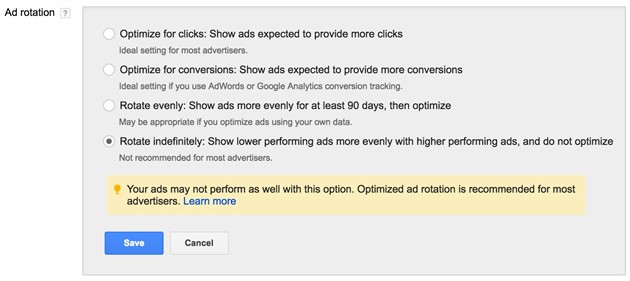
Creating several ad variations allows your audience to decide for you which they're most receptive. By letting the variations run for a month, you'll see which generates the most conversions.
2. Remove "no sales zones"
If you're using an ad platform (e.g., AdWords) that allows location targeting, it's highly likely that you're serving ads in "no sales zones." These are simply locations that have generated little to no conversions over a period.
It's best to track those areas over the course of three months. Identify them using Google Analytics. Simply head to Audience > Geo > Location and, under the drop-down (illustrated below), select Goal: Conversion Rate:
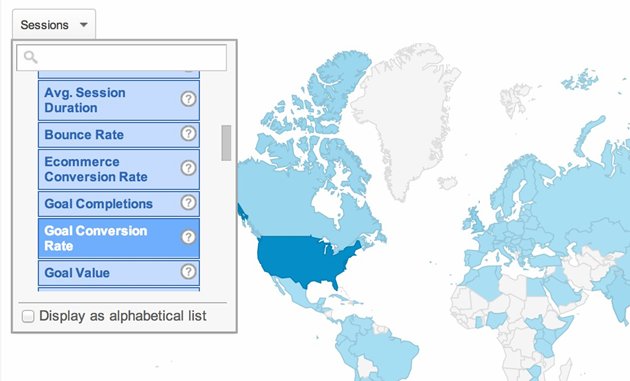
Dig deeper with city-level targeting no matter how large or small your organization is. Unless you're generating little amounts of traffic at a country/region level, this is one of the quickest ways to boost the ROI of your ads.
3. Give your quality score a boost
Optimizing quality score is best-practice, and the fact it would be on this list is nothing new.
But how it's optimized, especially for B2B organizations, is key. It all comes down to building better campaign structures.
Instead of simply optimizing your ad creative, break down your campaigns to create highly relevant keyword groups. Doing so will not only improve how effective your ads are but also boost clickthrough rates because you'll be serving ads relevant to the searcher's intent.
Using this approach, Audi boosted its CTR by 22% while cutting down cost-per-lead by over 50%.
James Parsons puts it best in his article: "Ad variations in ad sets can help a lot with keeping costs down. Instead of targeting one massive audience with one ad that may or may not be very good, break your audience down. Target different segments of your audience with different, more tailored ads."
Prioritize this approach by identifying your highest performing keywords in Google Analytics. When creating separate ad groups, ensure you include all three match types, like so:

Make sure your copy is compelling and, more important, relevant. Make these ads relevant by including the target keyword in both headlines.
4. Rigorous and ongoing A/B-testing
You should be continually experimenting with and optimizing your paid ads. To gain better results, you must tweak various elements of your campaigns, including images, calls to action, and landing pages.
Before we get into some A/B-testing ideas, here's a seven-step process for setting up experiments:
- Define your success metric: What will define the success of your campaign? For example, are you optimizing for clicks or conversions? Write down the test goal and choose a metric that serves that goal.
- Write a hypothesis: The clearer your hypothesis, the better the outcome. For example, if you were coming up with an experiment for your ad copy, a possible hypothesis could be "Including a deadline in the call to action will increase conversions 15%." Define your variable and create a hypothesis.
- Create test ideas: Come up with as many ideas as possible. Some call-to-action ideas are "include a deadline," "create scarcity," or "highlight client results." Brainstorm as many as possible.
- Prioritize: Use the ICE framework to prioritize your tests: Impact, Confidence, and Ease. (Check out this guide from Trello to learn more.)
- Determine sample size: What is the sample size for each metric? For example: the minimum number of clicks, traffic, or conversions needed before your test ends. Define the minimum sample size for your experiment.
- Begin testing: Run your test for at least a week. Don't end it once you see results. You need as much data as possible across different behavioral variables. In other words, people behave differently at different times and days of the week. Once the test is over, use a calculator like this one to ensure statistical significance, and keep running your tests until they are statistically significant.
- Analyze results: Compare the results of your test to past performance. If the results are better, then the test was a success. If not, repeat the process until you see improvements.
That seven-step framework can be applied across all marketing channels. For optimizing your paid ads, here are three ideas to get you started.
A. Multiple Descriptions Using 'IF Functions'
Your experiments should test not only new copy variations but also new and emerging technologies. Using the AdWords IF function, you can create separate descriptions for mobile and desktop devices:
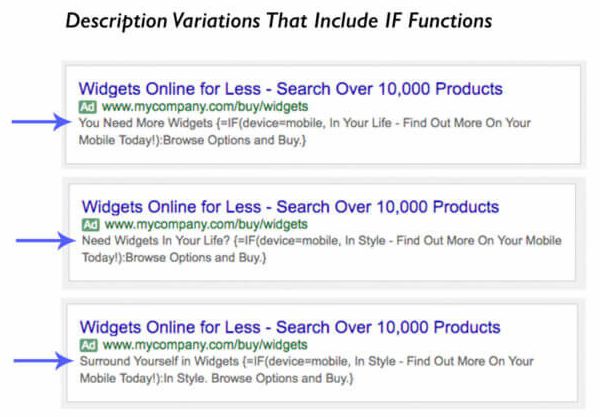
B. Pricing Variations
Including pricing can be a blessing and a curse. Some visitors may appreciate the transparency, whereas others may be turned off at the reminder that they need to buy something. In this example, conversions increased by simplifying the price:
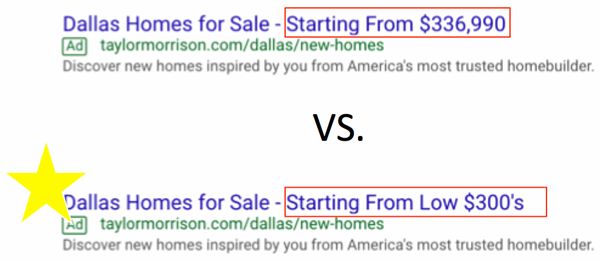
C. Social Ad Types
Did you know that Facebook had 10 ad types? If you're using only a single format, it may be time to test new types. Here, Scoro tested carousel ads with the standard image format. In the end, the regular image format had a 300% lower CPA:
5. Fix technical issues
An Akamai study from 2009 found that 79% of online shoppers are less like to buy from a site with a dissatisfying experience. That statistic still applies today: If you have even the most minor technical issues on your site, you risk annoying users and losing conversions.
One of the most common (and critical) technical issues is site speed. If your page takes too long to load, you'll look bad in Google's eyes as well as your potential customers'.
Use Google's PageSpeed Insights to uncover areas of your website that need technical optimization. Compress images if necessary, and consider removing unnecessary scripts or plugins.
Cross-device compatibility is another important factor. If searchers are finding your landing page via a mobile device, you'd better make sure your website is optimized for it.
Use Google Analytics to see how sales are performing on various devices. You can find this report under Audiences > Mobile > Overview:
Click on the "Conversions" drop down for a cross-device comparison for each goal.
6. Test new ad formats
As I noted earlier, testing new ad formats must be a priority when looking to boost conversions while reducing CPA.
For example, if you're looking to generate leads from searchers on mobile devices, test the Messaging extension for top-of-funnel calls-to-action:
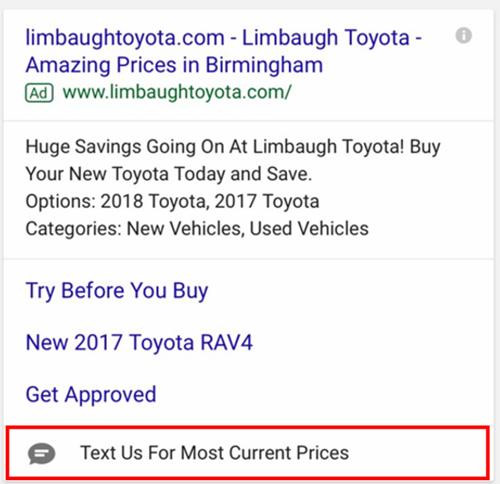
Use Ad Customizers to add an element of urgency to your ads; you can include countdown timers to create a sense of urgency.
Again, Facebook has several ad types you can play with. These examples might well apply for your B2B campaigns:
- Video ads: Instead of using static images, put your personality forward with video. You can use a mobile phone to record direct-to-camera or play with studio setups and even animations to grab the attention of your audience.
- Lead ads: These are perfect for B2B marketers. These ads allow you to serve lead magnets and capture contact details straight from the Facebook platform. Here's an example of one in action:
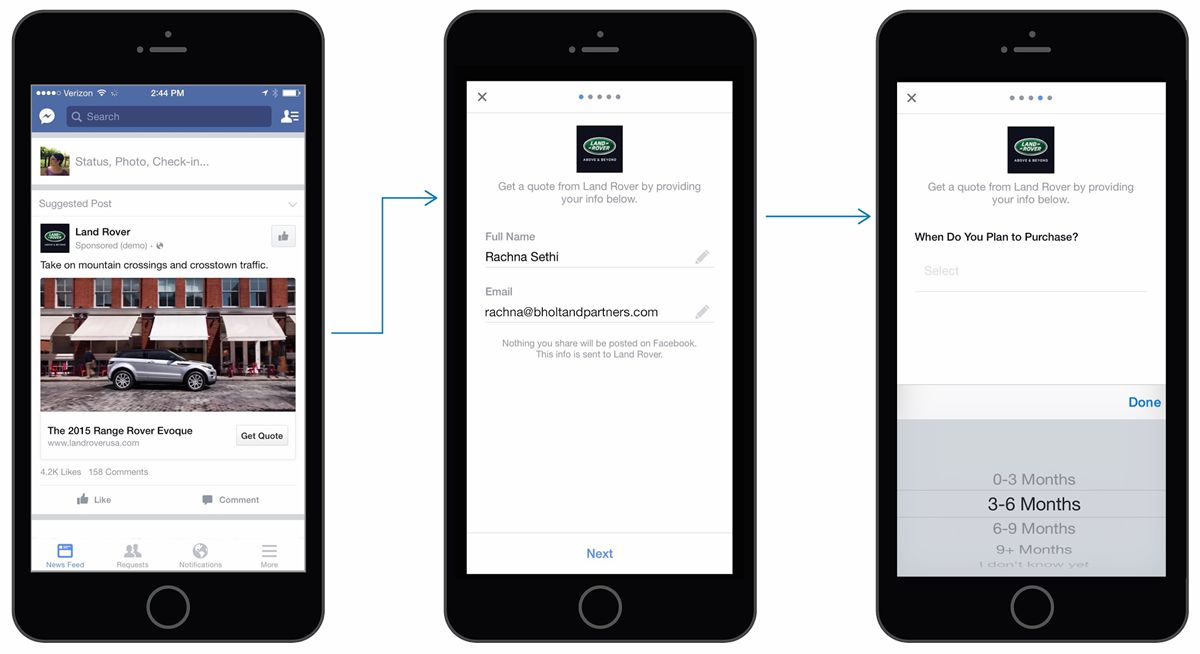
- Event ads: Attract and sign up more attendees to your events. You'll quickly generate bums on seats when coupled with the right targeting:
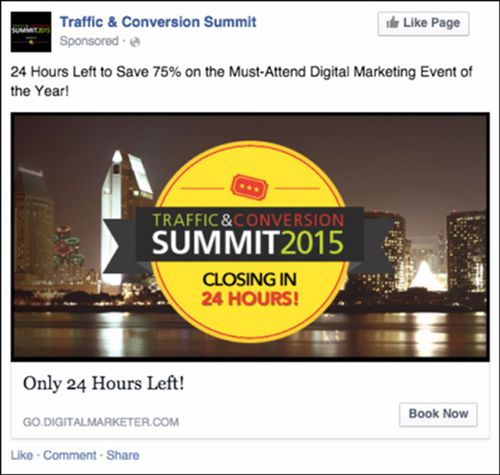
7. Turn cart abandonment into sales
Cart abandonment isn't exclusive to the e-commerce world. If you're selling a digital product or SaaS offering, ads that target cart abandonment may help you boost conversions and, thus, reduce CPA.
You may already be using behavioral emails to recapture abandoned sales. But did you know you can do the same with Facebook ads?
With this approach, you'll serve ads to those who have gone through to checkout but have not entered credit card details. This technique can also work with those who don't complete a trial signup or those who go through a trial without signing up for the full product.
Here's the process:
- Upload your product catalog to Facebook. For SaaS offerings, this will be the different product tiers (e.g., Lite, Professional, etc.)
- Modify your Facebook pixel to support dynamic ads. Doing so will pass product and lead data to the Facebook ad platform.
- Set up dynamic ad templates. The templates will be populated based on the product data you uploaded.
- Run the ads!
You can also set up custom audiences, which in this context include...
- Trial signups that don't convert
- Users who make it to the checkout without completing
- Prospects who don't show up to scheduled demos
Consider including an incentive to get users to act. Avoid discounts and instead offer bolt-on products and services (e.g., free onboarding and setup).
8. Target email non-opens
This final technique takes the principles discussed above and applies them to the top of your email funnel.
One of the biggest causes of inflated CPAs is nonconverting leads. If you capture leads who never open your emails, then it's hard to get them to convert. But that doesn't mean you can't reach them.
Using this approach, you'll get in front of these stale subscribers with important messages and reactivate stale leads.
Here's how you do it:
- Export your list of "non-open" subscribers to a .CSV file. Most email service providers allow you to do this with ease.
- Upload the .CSV as a Custom Audience on the Facebook Ads platform.
- Serve business-critical ads to this audience.
It's a simple approach. But it can quickly activate old prospects who are no longer engaging with your emails.
* * *
An overarching theme throughout this article has been testing. Testing new ad types, formats, and copy to improve results.
To reduce the CPA of your ads, you need to try new approaches—whether that's A/B-testing new copy or creating new ad groups for your highest-performing keywords. Each test and tweak will gradually boost your ROI over time.
Test each of these approaches on a small scale, then roll out more widely once you see results.






